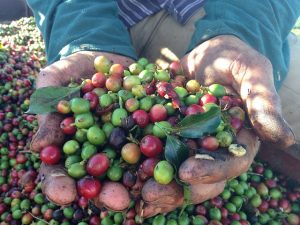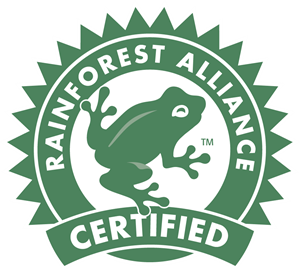
Let’s be honest, most of us can’t function without our morning cup(s) of coffee. It’s just about the only thing that motivates us to get out of bed in the mornings, and it has become a welcome companion during work meetings or long commutes.
We have developed quite a habit! In the UK alone, about 70 million cups of the stuff are drunk every day!
The caffeine hit is always welcome, though relatively short-lived. Unfortunately the environmental impacts of feeding our coffee habit lingers far longer.
With so much being drunk, we’ve been thinking a lot about how to make our coffee habits more eco-friendly.
The good news is, there are a lot of small (and larger) changes that we can all consider making so that our coffee habits are more sustainable and energy-efficient.
This article considers the environmental impact of coffee growing and identifies ways we can all green our morning coffee. After all there’s nothing more rewarding than enjoying your morning brew with the knowledge that you aren’t harming the environment.

How does conventional coffee production affect the planet?
The biggest source of environmental damage comes during the production of the beans.
The huge surge in demand for coffee has had a major effect on growing methods, with massive implications for the environment.
Traditionally coffee has been grown under a shaded canopy of trees. The canopy provides an essential habitat allowing orchids, insects, reptiles, small mammals and birds to live comfortably among the crop trees.
This sustainable growing method has been widely replaced by ‘sun cultivation’.
Sun-grown coffee is produced in plantations, with no forested canopy. Clearing forests to make plantations has had a seriously detrimental effect on biodiversity.
Relying on the cash crop for income also has significant social implications for local populations whose incomes can be highly vulnerable to fluctuations in the market price for their crop.
How Can You Make Your Coffee Habit More Eco-friendly?
#1 Choose your coffee carefully
Being a bit selective about the source of your beans will ensure you are not financially contributing to environmentally unsound practices!
 Look out for the logos!
Look out for the logos!
The Fairtrade Foundation focuses on the ethical side of coffee production, ensuring that growers aren’t exploited.
The Fairtrade Foundation’s mission is ‘to reduce poverty through trade’. It cuts out the middle men and offers a ‘structured minimum price and premium guarantee for producers’.

The Rainforest Alliance is more preoccupied with environmental concerns.
There is no guaranteed price for the growers; instead, the organisation aims to ‘conserve biodiversity and ensure sustainable livelihoods by transforming land use practices, business practices and consumer behaviour.’
Coffee grown in this way is often labelled a ‘bird-friendly’

# 2 Brew at home
Brewing your own coffee means you have full control over the strength of your drink while saving money and the environment!
There is a huge range of coffee-making appliances on the market. Choose a brewing method that suits your needs – they all have different benefits, and all are better for the environment than shop bought coffee.
The pour-over method of brewing has become increasingly popular as the most eco-friendly option. This straightforward coffee-brewing process involves drenching freshly-ground coffee beans with hot water, which dissolves the solubles in the beans.
Cafetiere/French press or drip filter appliances are manually operated and so only use the energy required to heat the water. With no waste except the coffee grounds they are a great way to green your brew. Cold brew coffee machines are also increasing in popularity; with no energy used to heat water they score even higher on the eco-friendly stakes.
Contrary to popular belief, machines which use coffee pods are not the worst for the environment. It’s all in the maths!
One pod gives a precise measure of coffee, and the water is flash-heated. Other brewing methods tend to use and waste more coffee beans per cup, so need more energy to heat them up. A pod machine could be a good choice if you want to reduce your carbon footprint.
Getting rid of the waste pods in an environmentally friendly way is the biggest problem with this type of machine.
When recycling pods you have to remove the coffee grounds from the inside. This means cutting off the top to get the grounds out. This takes time and is probably why so many pods end up in the landfill.
Buying pods made from compostable materials is a good eco-friendly option. Recyclable aluminium pods sound great, but they need to go to a dedicated recycling outlet. Planet Ark recommends using brands that have a recycling program for used capsules.
You can also get reusable pods that you fill with your own coffee grounds. Using one of these devices stops the pods from ending up in the landfill. You still have to clean them after every use, but it’s less hassle then having to cut the top off to remove the grounds.
Bean-to-cup and espresso machines also produce a single-serve coffee. They provide the same gains in energy use as pod machines without generating lots of waste.

#3 Bulk buy beans and store carefully
Freshly ground whole beans will produce a better flavoured coffee than pre-ground coffee. Whole beans also store better.
It’s important to think about the packaging that your beans arrive in. Look for packaging made of paper which can be easily recycled. Plastic packaging is very difficult to recycle.
Buying in bulk will reduce transport costs and the amount of packaging.
Coffee’s retail packaging is generally not ideal for long-term storage, so invest in a coffee canister.
When it comes to storage, your beans’ greatest enemies are air, moisture, heat, and light.
To keep your beans’ fresh roasted flavour as long as possible, store them in an air-tight container in a cool, dark cupboard. Avoid storage jars which allow light in. This will compromise the taste of your coffee.

#4 Compost your coffee grounds
To make your coffee eco-friendly, you need to start recycling your waste coffee grounds.
When sent to landfill, they decompose in anaerobic conditions and emit greenhouse gases such as methane,
The easiest way recycle your grounds is to use them in your garden, where they can have several beneficial effects.
They are a fantastic green compost material containing plenty of nitrogen and nutrients to help keep your plants healthy. They are also a great soil improver as they are rich in organic material which improves drainage, water retention and aeration.

#5 Use your own mug
Given that we are unlikely to completely kick the coffee shop habit, make it more eco-friendly by opting for a reusable coffee cup.
Not only will these keep your coffee hot, they can also be washed and re-used the next time you visit your favourite coffee shop, with no unnecessary waste.
We offer a wide range of products in our shop to help you develop an eco-friendly coffee habit. Take a look!

Leave a Reply